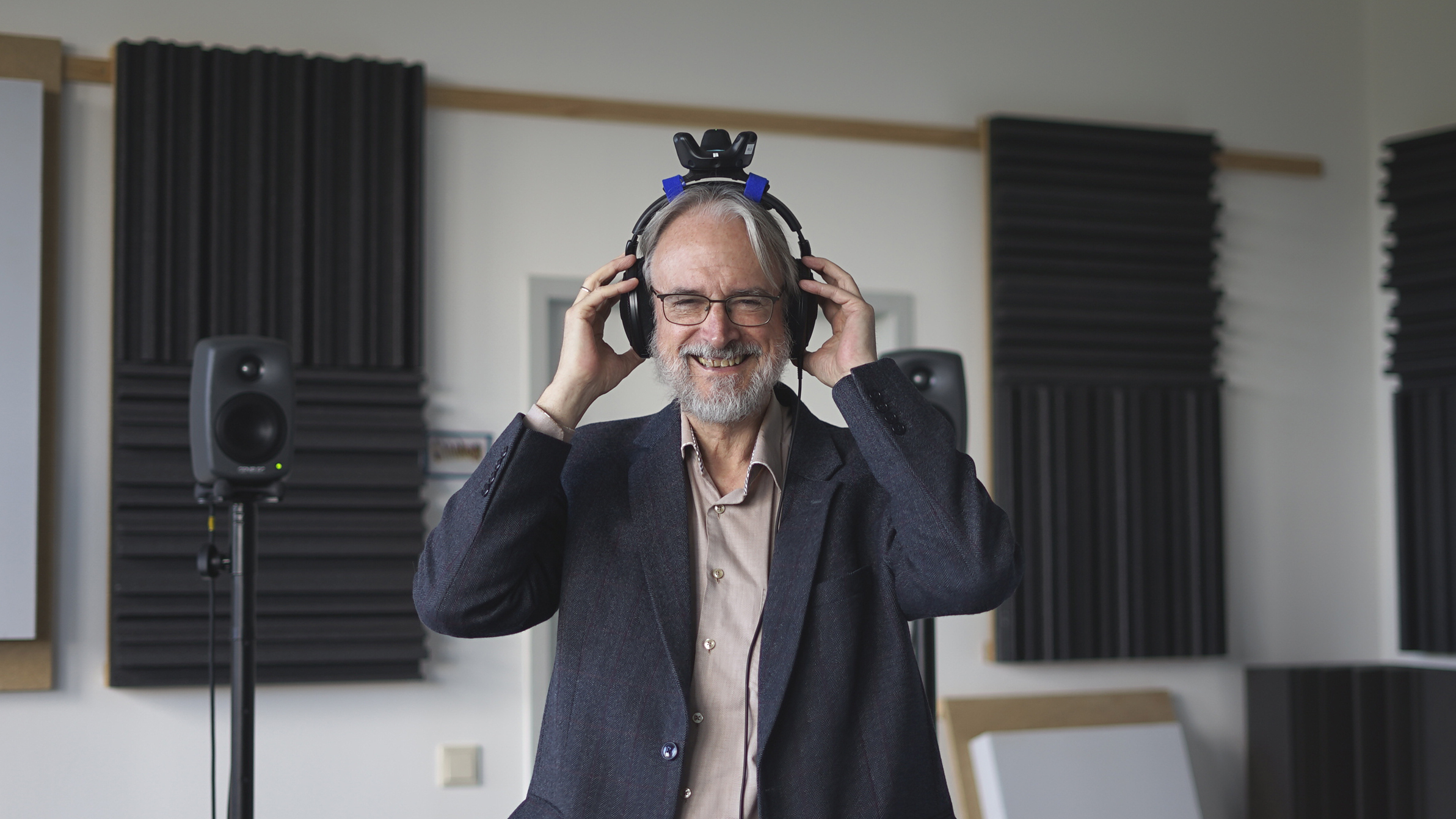
Love it or hate it, spatial audio is the next frontier for music listeners. Apple has found a way to bring it to both its AirPods Pro and AirPods Max headphones. Sony and JBL can do it in their respective flagship products, too, but that still leaves a huge swath of headphones that simply can’t listen to spatial audio music.
Karlheinz Brandenburg, known most famously for his work in developing the MP3 format for lossy audio compression, has plans to change that.
At CES 2024, the famed audio scientist was there to debut his company’s new Augmented Reality Headphone System that uses a Vive Tracker and a pair of regular wired headphones to transmit compelling spatial audio.
We got a demo of it and, in between listening sessions, were able to ask Brandenburg about his work — both the research done on the MP3 over 30 years ago and his team’s development of the new technology.
This isn’t another format — it’s a whole new technology

You can think of it as essentially “spatial audio plus”.
So one thing Dr. Brandenburg wanted to clear up immediately is that this new technology his team is creating is not a new format. It works by taking your location inside a room, determining which way your head is facing and matching that up to a spatial audio track. You can think of it as essentially “spatial audio plus”.
For the demo, Brandenburg setup a five-channel speaker system and played some music on it. He asked me to walk around the suite and hear how the music changed as I moved. Our ears are so refined as sensory organs that moving between the speakers changes the sound. The most obvious example of this is when your left ear is closer to a speaker, the sound is louder in your left ear than your right one.
Once I got properly calibrated, Brandenburg handed me a pair of wired headphones adorned by a Vive Tracker on top. I put them on and he switched the audio from the five channel speakers to the headphones — lo and behold, there was no difference.
Get instant access to breaking news, the hottest reviews, great deals and helpful tips.
The future of spatial audio
What Brandenburg’s team proved with the demo is that you can improve on the spatial experience by augmenting it with positional data from a VR headset. When asked if the team was in talks with the two biggest VR headset makers on the planet, HTC and Meta, Brandenburg smiled and simply said, “One of these companies we are currently in talks with, the other we are not. I’ll leave it to you to guess which one.”
Of course, what Brandenburg and the team showed me is still very much a prototype — in the near future the team wants to replace the external trackers with a more svelte solution. But the hope, according to Brandenburg, is that major headphone makers will license the technology from his company for use in future products.
As far as a comparison to his work on the MP3, Brandenburg says these are very different in nature — but both have posed their own challenges. For example, this time around there’s no Tom’s Diner test track to put the technology through a worst-case scenario, but that hasn’t stopped the famous audio scientist from putting anything and everything to the test.
So when will we have our own pair of spatial audio 2.0 headphones? Brandenburg's hoping that, with the right funding, you'll start seeing them in the next two to three years, potentially on the next Meta or HTC VR headset.
More from Tom's Guide
- I'd still choose wired headphones over wireless — here's why
- 5 audio accessories that improve headphone sound for $50 or less
- I test headphones for a living and these 5 underrated noise-cancellers are worth considering

Nick Pino heads up the TV and AV verticals at Tom's Guide and covers everything from OLED TVs to the latest wireless headphones. He was formerly the Senior Editor, TV and AV at TechRadar (Tom's Guide's sister site) and has previously written for GamesRadar, Official Xbox Magazine, PC Gamer and other outlets over the last decade. Not sure which TV you should buy? Drop him an email or tweet him on Twitter and he can help you out.
